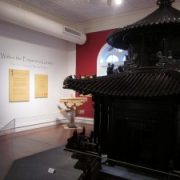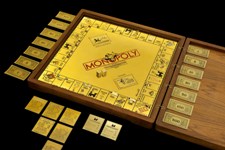see for yourself: a conference adventure
Many thanks to Natalie DeRiso, Community Programs Manager at the Senator John Heinz History Center in Pittsburgh, Pennsylvania, for this guest blog post.
As I sat down to write this blog post about attending my first annual Smithsonian Affiliations Conference, I tried to take mental stock of all the amazing things I wanted to talk about. I hemmed and hawed for a few days trying to decide what would be the most interesting to everyone reading. I thought about all I had learned just from the other attendees: the absolutely marvelous space camp program at the Kansas Cosmosphere and Space Center in Hutchinson; or the fact that Museum of the Rockies in Montana has one of the best dinosaur collections in the world including 12 T-Rex skeletons. There is a fabulous new facility, the Musical Instrument Museum in Phoenix, Arizona, with a hands-on room that allows artists of all levels to try out instruments from around the world; and that the Las Cruces Museum System in New Mexico is way ahead of schedule in creating a new LEED-certified facility for their Science and History Museum. In fact I could probably fill multiple posts talking about all of the creative, brilliant people I met at the conference.
I could also go on for ages about the conference itself. The Smithsonian’s focus on education was invigorating, especially for a community program manager in the education department of her museum, the Heinz History Center. Every session I attended gave me something new to chew on, and pushed me to move out of my comfort zone when thinking about education in my community programs. I had a light bulb go off at one point on the most basic aspect of my job, and was slightly embarrassed that I hadn’t thought of it before!
In the end though probably the coolest thing I got to do was go behind the scenes at the National Museum of Natural History. The session itself was about the loan process for the museum. It was great to hear the insiders’ view of the loan process, and also to see that all institutions, big and small, are facing the same issues when it comes to their artifacts and archives. But for a kid who dreamed of being an archaeologist or paleontologist from a young age (I wasn’t picky, I just wanted to dig stuff up, preferably in the desert), it was mind-blowingly cool to have Kathy Hollis, Collections Manager for the Paleobiology Department, casually point out the triceratops skull we were passing.
Sometimes, in the day-to-day of museum life, we can lose track of what makes our jobs so cool. Budgets, strategic plans and meetings, while important, have a tendency to weigh heavily on us and keep us up at night. It’s easy to lose perspective, but looking into the skull of a dinosaur can certainly knock you back down to earth. We get the chance to work with amazing collections, to hear and tell remarkable stories and sometimes, on those most treasured days, it really is like being Indiana Jones.

Conference attendees snap pictures of a kited salmon at breakfast at the National Museum of the American Indian
So in the end, that’s what my blog post is all about. The conference helped breath new life into me; it gave me the much-needed opportunity to remember why I went into this field. Maybe that’s a little cheesy but what else would you expect from a girl whose ring tone is still Raiders of the Lost Ark ?























